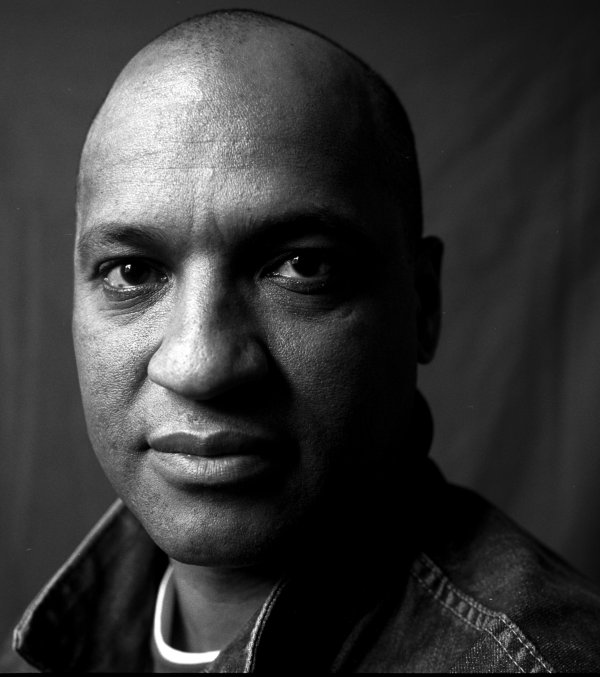For more than four decades, Armet Francis’ mission in photography has been to document the African diaspora. A Jamaican-British photographer with an acute understanding of black consciousness, his images are life-affirming moments that celebrate the resilience and survival of African diasporic cultures. Here, Autograph's Director, Mark Sealy, traces Francis' photography journey, connecting with the rich and diverse Pan-African world.
In 1969 everything changed for Armet Francis. It was the year he returned to Jamaica as a young photographer, transformed by his negative experiences of living in Britain. It was the year he became a conscious man and embraced Rastafari and the year in which he began to see through different eyes.
Back in Jamaica, he realised that his life was no longer formed by simplistic notions of geography and family. While visiting his childhood world, he understood that he was culturally displaced, unrooted, and politically situated outside the Western narratives that described and determined his condition. To understand the political and historical frames that he now occupied as a black subject, Francis intuitively knew that he would have to journey both spiritually and emotionally to rebuild the fragmented existence that had become his British reality, and that his photography would now be deployed as a vehicle not just to earn a living from, but also as an aid to capturing and sharing his desire to connect with the rich and diverse pan-African world.

"Francis aimed to reinstate dignity to the black subject and to make evident through an empathetic lens the violence and legacies of the Atlantic slave trade"

As a pan-African activist with a radical decolonising lens forged through a growing sense of self and an understanding of black consciousness, his new-found vision and unique mission in photography was to connect the African diasporic subject to a sense of time, culture and location; to reimagine and reveal what he termed ‘The Black Triangle’ as a place of understanding and a way of being. He aimed to reinstate dignity to the black subject and to make evident through an empathetic lens the violence and legacies of the Atlantic slave trade. Francis later stated in 1983, as part of his groundbreaking exhibition at The Photographers’ Gallery in London: ‘This concept was arrived at through a simple principle – Humanity – Insight – Compassion. This triangle first came to me in thoughts of the slave trade route. That is how I came to live in the Triangle: Africa, the Americas and Europe… A man reacting to his destiny.’¹
Critically then, when viewed through the history of British photography, we can observe that Francis’ photographs need to be read as life-affirming moments that work to celebrate the resilience and survival of African diasporic cultures. As the renowned cultural theorist Stuart Hall stated, Francis is ‘the photographer who most comprehensively captured what we think of now as the “Afro-Caribbean moment” – the rise of black consciousness of the African connection in the 1970s and 80s… In his frames, “the fact of blackness” achieved an emblematic physical presence and proud, radical individuality. The work he shot in the black diasporas of three continents – Europe, Africa, and North America / the Caribbean – was visible testimony to the underlying idea of the common destiny of the peoples of African descent.’²

"Francis’ photographs need to be read as life-affirming moments that work to celebrate the resilience and survival of African diasporic cultures"

As Francis’ career evolved, this sense of urgency around the representation of the black subject would move through critical twists and turns. His fashion shoots would become playful and rare frames of black joy and celebration. His portraits taken in 2008 of those who arrived on the Empire Windrush would be critical and rare interventions that give names to the faces of those who journeyed on that 1948 historic voyage which changed Britain forever. Whether photographing political activists such as Angela Davis speaking in London to packed audiences at Keskidee Arts Centre in 1975 or the young black Londoners who took to the streets in protest at the lack of justice and state care for those who perished in the New Cross Fire of 1981, we see that Francis through his diasporic lens worked uniquely to give voice, meaning and insight to a pan-African sense of being.
________
¹ The Photographers' Gallery, Armet Francis: The Black Triangle, 1983, accessed online
² Stuart Hall and Mark Sealy, Different: A Historical Context, 2001, p.13

Dr Mark Sealy OBE is Executive Director of Autograph (1991–) and Professor, Photography, Rights and Representation at University Arts London – London College of Communication. Mark is interested in the relationship between art, photography and social change, identity politics, race and human rights. He has written for many of the world’s leading photographic journals, produced numerous artist publications, curated exhibitions, and commissioned photographers and filmmakers worldwide.
Lawrence & Wishart have published his more recent critical writings on photography. These titles include Photography: Race, Rights and Representation, published 2022 and Decolonising the Camera: Photography in Racial Time, published 2019.
Banner image: Armet Francis, Fashion Shoot, London [detail], c.1970s. Courtesy the artist and Autograph, London. © Armet Francis.
Images on page: 1) Armet Francis, Angela Davis at Keskidee Centre, London 1975. Courtesy the artist and Autograph, London. © Armet Francis. 2) Armet Francis, Fashion Shoot, Brixton Market, London, 1973. © and courtesy the artist. 3) Mark Sealy, courtesy of Steve Pyke 4) Armet Francis, Fashion Shoot, Brixton Market, London, 1973. © and courtesy the artist.

Autograph is a place to see things differently. Since 1988, we have championed photography that explores issues of race, identity, representation, human rights and social justice, sharing how photographs reflect lived experiences and shape our understanding of ourselves and others.